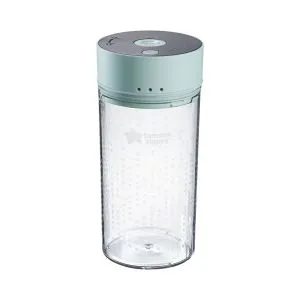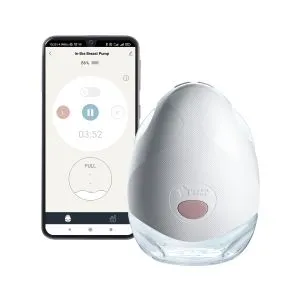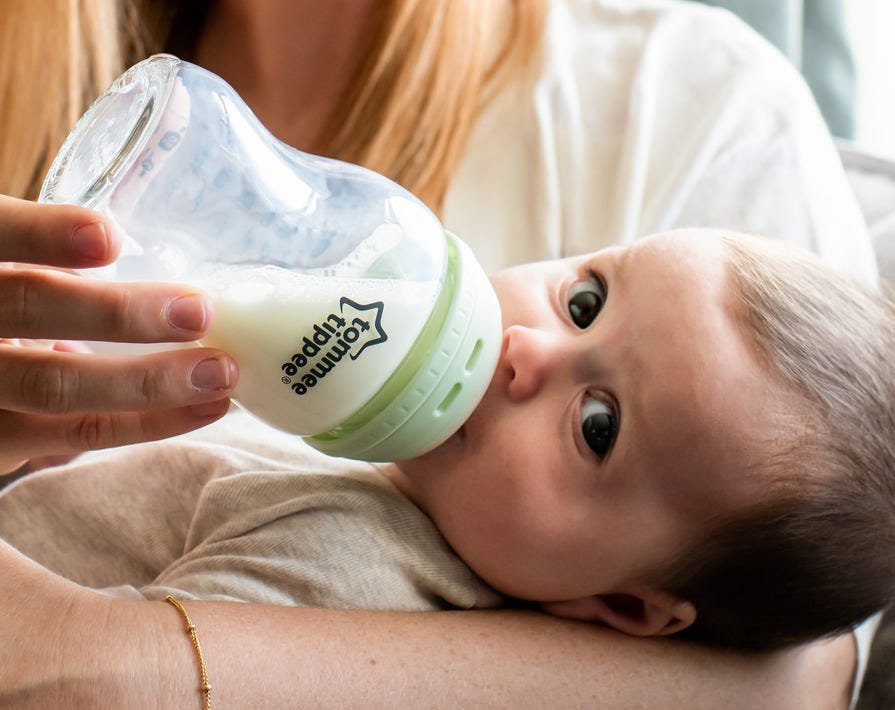Are they feeling unwell?
They may find it uncomfortable or painful to feed if they have a cold, an ear or throat infection, or thrush. Seek advice from your doctor as soon as possible if you think your baby has an illness that's putting them off their bottle.
Do they need to be winded?
During feeds, your baby takes in little air bubbles which can get trapped in their little tummy. This can cause them discomfort and sometimes lead to colic.
If your baby seems uncomfortable during or after a feed, spending a few moments burping them can really help to relive discomfort caused by trapped wind.
You can burp your baby...
- Over your shoulder: With your baby's chin resting on your shoulder, support their head and shoulder area with one hand, and gently rub and pat their back. It can help to walk around while doing this.
- Sitting on your lap: Sit your baby on your lap facing away from you. Place the palm of your hand flat against their chest and support their chin and jaw (don't put any pressure on the throat area). Lean your baby forwards slightly and with your free hand, gently rub or pat their back.
- Lying across your lap: Lie your baby across your lap face down. Supporting their chin (don't put any pressure on the throat area), use your free hand to gently rub or pat their back.
If these methods don't work and your baby still shows signs of trapped wind (crying, arched back, drawing legs into tummy, clenched fists), try lying them on their back and gently massaging their tummy and moving their legs back and forth.
Is the teat blocked?
You can test for this by turning the bottle upside down, it should drip quickly. If not, it may be blocked which will not allow your baby to feed comfortably and cause them to feel frustrated. If the teat is blocked, simply replace it with another sterile teat. If the problem persists, you may need to try a different flow rate.
What can I do to encourage my baby to take a bottle?
Read on for some handy bottle acceptance tips and tricks.
Six is the magic number
If you're baby is not taking to a bottle right away, you may be tempted to keep buying different bottles and teats to try until they accept one.
Six tries of the same bottle is likely to be as successful as trying six different bottles one at a time. So, save your money and persevere with the bottle you think is closest to a breast in shape and movement.
BabyCentre advises that "if your baby really won't accept a bottle, then you could try feeding them with a spoon or a soft-spouted beaker. If they're around six months old, they may manage to drink from a cup. Some babies never bottle feed, moving happily from breastfeeding to using a cup as part of the family meal".
Have someone else give the bottle
Babies love boobs. They're uniquely designed to give baby a warm and comfortable feeding experience. So, if you and your boobs are still around when you're trying to give them a bottle, your little one might be distracted.
This could be the time to call in help from your partner, friends or family members. If your baby gets the message that you're not around, they might be more likely to accept a bottle feed from someone else. Bottle feeding is a great opportunity for others to enjoy bonding with baby.
Try offering the bottle when the baby is not very hungry
When babies are having a tough time taking a bottle, it can help to offer it to them between feeds when they're not overly hungry. As we all know, learning a new skill takes patience and effort, and we all have more of both when we feel full, content and calm!
Practice paced feeding
Paced bottle feeds put your baby in control of the process, this means following your baby's cues and feeding them when they show signs that they're hungry. After a while, you will get to know your baby's hunger signs, they may...
- Try to find something to suck - usually their hands or fingers
- Move their eyes around
- Root around or look for the teat of the bottle
- Start wriggling and getting restless
- Open and close their mouth
Keep in mind that crying is the last sign of wanting to feed, so try and feed your baby before they cry.
Babies tend to feed little and often, so they may not always finish their bottle. Never force your baby to finish the bottle - always be led by your baby. If your baby refuses their bottle, take it away and offer them another later.
Switch up the temperature
Some babies prefer warmed milk, some room temperature, and others cold. Experiment a bit to see if your baby has a preference. You can also try warming the teat by placing it in warm water that's been boiled and left to cool a little.
On the flip side, is your baby's teething, you can chill the teat in the fridge before the feeding to help relive sore gums.
Try to feed in a quiet space
Everything feels better when you're relaxed and comfortable, right? That goes for bottle feeding baby, too. Try to create a quiet and comfortable space to feed in. Somewhere away from distractions like the sounds and lights of the TV.
It's not always easy, especially if you have other little ones around, but it's important for you to have some quiet time too.
Try different feeding positions
Bottle feeding your baby means that you can switch it up and try holding them in different positions. Some babies like to sit upright when feeding, and this can help reduce reflux. Try holding baby facing out to look around the room, or sitting propped up on your legs.
You can also try feeding your baby while walking around and gently bouncing, swaying or rocking to help them feel calm and relaxed. Remember, never leave your baby alone to feed with a propped-up bottle as they may choke on the milk.
Try skin-to-skin contact
Maintaining eye- and skin-to-skin contact are great ways to bond with your baby, and dads, co-parents and other key adults who spend lots of time holding and feeding baby can also experience a surge of feel-good nurturing hormones.
UNICEF states that skin-to-skin contact also...
- Calms and relaxes baby
- Regulates the baby's heart rate and breathing, helping them to better adapt to life outside the womb
- Stimulates digestion and an interest in feeding
- Regulates temperature
- Enables colonisation of the baby's skin with the mother's friendly bacteria, thus providing protection against infection
Try different teat flows
All babies and parents are different and the flow of milk from a bottle may feel very different to the flow of milk from your breast. So you may need to slow down or speed up the flow through the teat you use on your bottle.
Babies do have to learn slightly different suckling techniques to feed from a bottle, and generally (but not always) milk flows faster through a teat than from a breast.
Most little ones start with a slow flow teat so that they get used to the new sucking action needed to take milk from a bottle, without being overwhelmed. But if you had a strong flow of breast milk, they may find that slow flow is too slow, and therefor prefer a faster flowing teat.
Get to know your teats
If your baby is refusing the bottle, it's sometimes a good idea to get them used to the teat on its own first. Try bringing the teat (without a bottle attached) to baby's mouth and rub it along their gums to help them get used to the unfamiliar texture.
Then, encourage baby to suck by placing your finger inside the teat and rubbing it gently on their tongue. Finally, you can add some drops of milk to the teat and offer this to your baby. If at any point your baby pushes the teat away or show that they're not interested, then stop and try again another time.
Let baby to latch on their own
It can help to tickle baby's upper lip and nose with the teat and wait for them to open wide to latch on like they would when breastfeeding, rather than putting it directly into their mouth. Make sure that baby latches onto the wide base of the teat and not just the tip. Both of their lips should be flanged outwards, as they would be when breastfeeding.
Switch between breast and bottle
We know that as a parent, you'll do whatever's needed to keep your little one fed. So, if you're struggling to make the switch to solely bottle feeding, you could try to introduce a bottle gradually alongside breastfeeding, this is known as combination or mixed feeding.
Pregnancy, Birth & Baby has lots of information about mixed feeding.
Ask for help
Finally, whether you've chosen to bottle feed with formula or expressed milk (or a combination of both), we know that it can be difficult from time to time.
Don't be afraid to talk to your midwife, health visitor or other parents who've bottle fed if you need help and support. Here are some organisations that can help.










